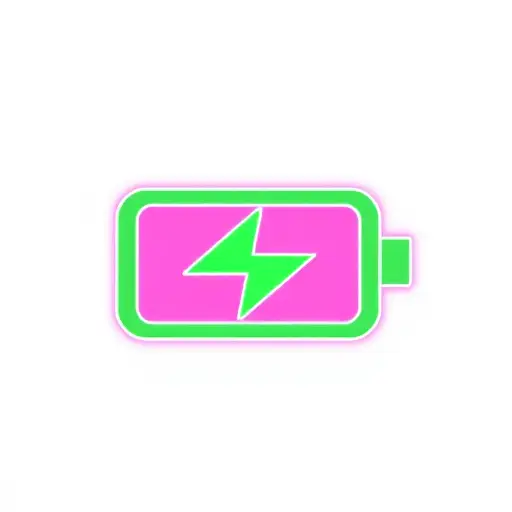Introduction to Batteries
Batteries are a vital component of modern technology, powering everything from household devices to electric vehicles. Understanding their functionality and characteristics can significantly enhance one’s ability to choose the right battery for specific applications. These electrochemical cells convert stored chemical energy into electrical energy, allowing devices to operate without needing continuous external power. This autonomy is not just convenient; it broadens the range of devices and applications that can operate wirelessly, enhancing user experience.
Batteries are essential for our daily lives, whether in cars, smartphones, or home energy systems. With increasing reliance on devices requiring reliable energy, knowledge about battery types and technologies is more crucial than ever. Choosing the right battery not only maximizes performance but also ensures longevity and safety, making it imperative to understand the essentials.
Types of Batteries
Batteries fall into two primary categories: primary batteries, which are disposable and cannot be recharged, and secondary batteries, which are rechargeable. Each type serves different applications and has its advantages and disadvantages.
Common Chemistries
-
Alkaline Batteries: These are the most commonly used primary batteries found in household items like remote controls, flashlights, and toys. They are known for their stability and relatively high energy density. However, since they are non-rechargeable, they contribute to environmental waste when not disposed of properly. They also perform poorly in high-drain devices compared to rechargeable types.
-
Lithium Batteries: Many devices utilize lithium batteries due to their long shelf life and high energy capacity. They are lightweight and perform well under high load conditions, making them ideal for smartphones, laptops, and cameras. However, lithium batteries can be more expensive than alkaline options, which must be considered based on the device's use.
-
Nickel-Metal Hydride (NiMH): Commonly found in rechargeable batteries, NiMH cells exhibit a higher energy density than traditional nickel-cadmium (NiCd) cells and have lower toxicity. They experience the "memory effect," where partial recharging leads to reduced capacity over time, but their overall performance makes them widely used in rechargeable applications.
Understanding the differences between battery chemistries helps consumers make informed choices, especially when considering performance, longevity, and environmental impact.
Applications of Batteries in Everyday Life
Batteries power a plethora of devices, forming an integral part of our daily lives. They are the unsung heroes behind countless gadgets that enhance our convenience and productivity. As technology evolves, the application of batteries extends even further into renewable energy systems, powering solar energy storage for homes and businesses.
-
Remote Controls: Typical household remote controls rely on AA or AAA batteries to function. Knowing the specific requirements can help in selecting the right power source to ensure reliability.
-
Toys: Many electronic toys require batteries for their operation, especially remote-controlled car models or those featuring interactive technology. Ensuring that these toys have the appropriate battery type can enhance playtime and performance.
-
Cameras: Digital and film cameras depend on batteries for operation. Selecting the correct battery according to camera specifications ensures optimal function, particularly in demanding situations like outdoor environments where lighting can impact performance.
Understanding battery applications broadens perspectives on how integrated they are in daily life. This knowledge empowers consumers to make informed decisions about product longevity, compatibility, and performance efficiency.
The Evolution of Battery Technology
Battery technology has evolved dramatically, from primitive lead-acid batteries to the sophisticated lithium-ion models widely used today. Innovations such as faster charging times, longer life spans, and enhanced energy storage capacity have transformed the way we use technology.
This historical progression reflects the advancement of materials science and engineering, showcasing how each technological leap addresses previous limitations. Understanding the historical context offers insight into contemporary features and benefits, such as the development of smart batteries with integrated management systems that enhance performance and safety.
In the rapidly changing field of technology, staying informed about the latest advancements is essential for consumers wanting to make educated purchases. For example, investigating options for specific applications like D cell batteries can enhance choices. For a focused guide, visit the best D cell rechargeable battery.
D Cell Batteries
D cell batteries are among the most common alkaline batteries, known for their large size and ability to store significant energy. They are widely used in devices such as flashlights, radios, and toys. Due to their capacity, they are ideal for applications where a higher power output is necessary for extended use.
Differences Between Regular and Rechargeable D Cell Batteries
While traditional D cell batteries are usually alkaline and designed for one-time use, rechargeable D cell batteries provide an eco-friendly alternative. Rechargeable batteries can be cycled through numerous charging and discharging periods, offering a lower overall cost and reduced environmental impact over time. However, they require a compatible charger and may have specific usage guidelines.
Rechargeable D cell batteries excel in high-drain devices, which require a reliable and long-lasting power source. Understanding the characteristics of both options can help consumers weigh longevity, cost-effectiveness, and environmental considerations when making their purchasing decisions.
Best Uses for D Cell Batteries
D cell batteries are commonly utilized in applications that draw significant power. Some of their best uses include:
-
Flashlights: High-intensity LED flashlights often rely on D cell batteries for reliable light output, especially in emergency situations.
-
Radios: Both portable and emergency radios often employ D cell batteries for portability and extended use during outages.
-
High-performance Toys: many kids' toys like remote-controlled vehicles require the robust energy that D cell batteries can deliver.
Having knowledge of the applications of D cell batteries enables consumers to select them confidently for their devices based on energy requirements and device specifications.
For deeper insights into selecting the right D cell option, check out the best D cell rechargeable battery.
Rechargeable Batteries for Blink Camera
The Blink Camera has become a popular choice for home security due to its wireless capabilities and ease of use. However, it requires a reliable power source to function optimally.
Importance of Choosing the Right Battery
Choosing the correct rechargeable battery is critical for extending the operational time of your Blink Camera and maintaining efficiency. A poor-quality battery can lead to failures in performance, resulting in unrecorded events and compromised security.
High-capacity lithium-ion batteries are often recommended among users for their durability and extended cycle life. Researching battery specifications that ensure compatibility and efficiency is valuable for enhancing safety and reducing hassles.
Recommended Rechargeable Batteries for Blink Camera
Consumers should seek batteries specifically designed for Blink cameras to maximize performance. Popular options often include high-capacity lithium batteries produced by reputable brands. These batteries are well-reviewed for reliability in temperature fluctuations and capacity retention, ensuring the camera remains functional, especially during critical monitoring.
Explore the top-rated choices to enhance your security system by visiting the best rechargeable batteries for Blink camera.
18650 Batteries
The 18650 battery is a popular cylindrical cell with a wide range of applications due to its high energy density, making it particularly favored in everything from flashlights to laptops and electric vehicles.
Applications of 18650 Batteries
Due to their compact size and high capacity, 18650 batteries are often found in various high-performance electronic devices. Specific applications include:
-
Electronic Cigarettes: Many vaping devices utilize 18650 batteries due to their compact design and robust energy output.
-
Flashlights: LED flashlights benefit from the high discharge rates that 18650 batteries can provide, offering brighter light levels and longer runtime.
-
Power Tools: Cordless tools, such as drills and saws, often fuse various 18650 cells to provide a perfect balance of power and weight, making them easier to handle.
This versatility has made 18650 batteries a staple in different sectors of technology, leading to growing market investments and developments in this type of battery.
How to Choose the Best 18650 Battery for Flashlights
When selecting an 18650 battery for a flashlight, it is essential to consider attributes such as:
-
Capacity: Measured in milliamp hours (mAh), higher capacity batteries offer longer usage time. This is crucial if you depend on your flashlight during extended outdoor events or emergencies.
-
Discharge Rate: A high continuous discharge rate is vital for flashlights that require peak performance, particularly when utilizing the maximum brightness levels.
-
Compatibility: Some flashlights may require specific configurations regarding the battery's size or end type (flat top vs. button top). Ensuring compatibility can prevent potential device damage.
For targeted recommendations focused solely on enhancing flashlight performance, please refer to the best 18650 battery for flashlight.
Button Top vs. Flat Top 18650 Batteries
Understanding the differences between button top and flat top 18650 batteries is essential because not all devices support both types.
-
Button Top: These batteries have a slight protrusion at the top, facilitating better contact in certain devices where tight connections are required. However, if your device does not accommodate this format, a button top may not work correctly.
-
Flat Top: These batteries feature a flush surface and can be better suited for devices with tighter spaces and lack of spring tension.
Whichever choice you make, ensure compatibility with your flashlight's requirements to avoid unnecessary headaches. For specific recommendations on button top selections, see the best 18650 button top battery.
Lithium D Batteries
Lithium D batteries provide an excellent choice for high-capacity power needs in various applications.
Benefits of Using Lithium D Batteries
Lithium D batteries are often favored for their reduced weight compared to alkaline alternatives and their ability to function well in extreme temperatures. Here are some reasons why they are preferred:
-
Longevity: Lithium batteries often outlast alkaline batteries, making them cost-effective and environmentally friendly.
-
Performance: They maintain a stable voltage and capacity, ensuring devices receive consistent energy and perform as expected, which is crucial in high-demand tools and electronic devices.
-
Shelf Life: Lithium D batteries have an extended shelf life, meaning they can sit unused for years without losing charge, making them convenient for emergency kits and infrequently used devices.
For insights on selecting the best lithium options, consult the best rechargeable lithium D batteries.
Recommended Brands and Models
Major brands offer highly rated lithium D batteries, ensuring reliability and consistency. Look for batteries robustly tested and rated for low self-discharge characteristics, as these provide the best longevity and performance in high-drain devices.
Researching reviews and user experiences can aid in finding the best models that suit specific needs, whether accustomed to household devices or professional equipment.
Battery Management Systems
Understanding how to manage batteries effectively can significantly enhance longevity and safety.
What is a Remote Battery Disconnect Switch?
A remote battery disconnect switch is a safety mechanism allowing users to shut off power without physically interacting with the battery. This feature is especially valuable in various scenarios, from RVs to boats, and emergency backup systems.
Importance of a Remote Battery Disconnect Switch
This system enhances safety through several avenues, including:
-
Preventing Battery Drain: It ensures batteries don’t drain excessively when not in use, prolonging operational lifespan.
-
Fire Safety: Disconnecting power can help prevent electrical hazards, especially when performing maintenance or repairs.
-
Convenience: Remotely managing your battery system increases user convenience, particularly in hard-to-reach setups.
By ensuring safe and efficient battery management, users can significantly improve performance and reduce potential hazards. For more information regarding selecting this device, refer to the best remote battery disconnect switch.
Tool Batteries
Tool batteries play a critical role in both consumer and professional applications, making the right choice essential for efficiency and effectiveness.
Importance of Tool Batteries
The correct tool battery can enhance performance by ensuring that power tools function seamlessly. High-quality batteries can greatly extend the life of the tools and improve user confidence during various tasks, whether in a professional setting or at home.
Common Types of Tool Batteries
There are several types of tool batteries available, each designed for unique applications:
-
Lithium-ion Batteries: These have become the industry standard due to their lightweight nature, high energy density, and minimal self-discharge characteristics. They can hold charges longer than other types and have facilitated the rise of cordless power tools.
-
Nickel-Cadmium (NiCad): While less commonly used today, NiCad batteries were once the standard. They are robust and can withstand demanding conditions, but their "memory effect" and environmental concerns have led many manufacturers to phase them out for lithium-ion alternatives.
Factors to Consider When Choosing a Tool Battery
When selecting a battery for power tools, consider the following:
-
Voltage: Choose batteries rated appropriately for the tool’s power requirements to ensure optimal performance.
-
Capacity and Runtime: A higher capacity correlates with longer operational time, particularly crucial for extensive work.
-
Weight and Ergonomics: A lighter battery may enhance ease of handling, which is crucial for tasks requiring extended use over time.
To find tailored recommendations based on tool specifications and usage, explore the best tool battery.
Batteries for LEDs and Solar Applications
Batteries designed for LEDs and solar applications are often tailored for specific operational requirements, ensuring the best performance and reliability within these systems.
Overview of 12V Batteries for LED Lights
12V batteries are frequently utilized to power LED lights in a variety of situations, particularly in home installations and automotive applications.
Factors to Consider When Choosing a 12V Battery for LED Lights
When selecting a 12V battery, emphasize these aspects:
-
Capacity: Understanding the wattage and the expected runtime allows for better selection in battery capacity, ensuring your LED arrays function as intended.
-
Type: Lithium batteries often outperform traditional sealed lead-acid (AGM) alternatives, providing longer life cycles and superior discharge rates.
Overview of 12V Solar Batteries
Solar batteries are essential for capturing and storing energy generated from solar panels, making them critical to any solar energy system.
-
Cycles: A battery’s cycle life dictates how many times it can discharge and recharge, making it vital to select high-quality solar batteries to optimize energy storage.
-
Depth of Discharge (DoD): Choosing a battery with an appropriate DoD ensures the battery can be used efficiently without degrading its lifespan.
For specific product recommendations related to both LED lights and solar needs, visit the best 12V battery for LED lights and the best 12V solar battery.
Specialty Batteries
Certain batteries cater to specialized needs, ensuring functionality across various devices and applications.
Understanding the 3.7 Volt Rechargeable Battery
3.7V rechargeable batteries are prevalent in handheld electronic devices such as mobile phones, tablets, and some cameras.
Common Uses and Brands
Many brands produce reliable 3.7V batteries that cater to consumer electronics' demanding energy needs. Selecting high-quality batteries with good reviews can make a significant difference in device performance.
For a comprehensive overview of popular models and usage, check out the best 3.7 volt rechargeable battery.
Overview of CR1632 Batteries
CR1632 batteries, commonly known for their use in watches, car key fobs, and various small electronics, are part of the coin cell family. Their compact design makes them perfect for thin devices requiring reliable and consistent power.
Recommended Models
Choosing high-quality CR1632 batteries is essential for optimal performance. Researching the most reputable manufacturers can yield better long-term energy solutions.
For detailed comparisons regarding performance and longevity, check the best CR1632 battery.
9 Volt Lithium Batteries
Commonly used in smoke detectors and certain toys, 9 volt lithium batteries offer a balance of safety and convenience. Their robust design ensures extended shelf life, which is critical for emergency devices meant to function during power outages.
Choosing the Best Model
Selecting 9V batteries from trusted manufacturers can enhance reliability, making thorough research into quality and user feedback beneficial. For more guidance, kindly visit the best 9 volt lithium battery.
EV and Hybrid Vehicle Batteries
As electric vehicles (EVs) become increasingly prevalent, understanding their batteries becomes essential for consumers and enthusiasts alike.
Overview of Electric Vehicle Batteries
Electric vehicles primarily utilize advanced battery technologies, mostly lithium-ion, to deliver the energy essential for driving efficiency and range. Understanding these technologies can facilitate informed decisions when purchasing EVs or considering home installations.
Home Charging Solutions for Electric Vehicles
Implementing a home charging solution allows for convenient refueling of vehicles. Home charging stations can significantly enhance user convenience by ensuring that your vehicle remains charged and ready.
Maximizing efficiency in choosing a charger is paramount. Factors such as wattage, compatibility, and charging speed can all influence the overall experience.
To learn more about optimal products for your Kia Niro EV, consult the best home charger for Kia Niro EV.
Tactical and Surveillance Batteries
In tactical and surveillance applications, the choice of battery can significantly affect device performance and reliability.
Introduction to Tactacam Reveal X Camera
The Tactacam Reveal X Camera is designed for outdoor enthusiasts and hunters seeking reliable surveillance solutions. Understanding the energy requirements that the camera demands ensures optimal functionality in various settings.
Compatibility of Batteries with Tactacam Reveal X
Choosing compatible, high-quality batteries is vital since the performance directly impacts surveillance quality, clarity, and reliability. Poor battery choice can lead to missed opportunities and operational failures.
For leading recommendations on ensuring optimal functionality, visit the best batteries for Tactacam Reveal X.
Photography Batteries
When it comes to photography, the correct battery choice can significantly impact the quality and effectiveness of your shoots.
Importance of AA Batteries for Digital Cameras
Many digital cameras still rely on AA batteries, especially those geared towards casual photography and compact design. Understanding your device's battery requirements can save time, frustration, and money.
Factors to Consider When Buying AA Batteries
Consider battery type, specifically between alkaline and rechargeable NiMH:
-
Alkaline: Good for casual photography, but typically don't provide the longevity required for intensive use.
-
NiMH: Rechargeable with a higher capacity and longer life makes them suitable for DSLR and other professional cameras.
For proper recommendations based on your camera and shooting style, delve into the best AA batteries for digital cameras.
Group Batteries
Group batteries are used in heavy-duty applications requiring significant power, commonly seen in automotive and marine sectors.
Understanding Group 26 Batteries
Group 26 batteries are designed for specific applications such as small engines, gardening equipment, and recreational vehicles. Understanding these applications is crucial for making informed decisions.
Recommendations and Applications
Group 26 batteries are often robust enough to withstand harsh conditions. Choosing reliable models ensures optimal performance in demanding environments.
Explore tailored recommendations by checking the best Group 26 battery.
Understanding 26650 Batteries
Similar to 18650 but larger, 26650 batteries are often used for high-drain devices such as electric bikes and high-powered flashlights. High capacity and discharge rates make them invaluable for those applications.
For detailed comparisons regarding performance and recommendations, consult the best 26650 battery.
Overview of Group 31 Lithium Batteries
Group 31 lithium batteries are intended for heavy-duty applications, including industrial use and RVs. These batteries offer excellent performance under load stress, enhancing reliability in demanding tasks such as emergency backup power supplies.
For curated suggestions on Group 31 batteries tailored for your needs, refer to the best Group 31 lithium battery.
Chargers
Understanding Battery Chargers
Battery chargers can significantly influence how batteries perform and last. These devices vary widely in terms of complexity, from simple plug-in chargers to more sophisticated smart chargers capable of optimizing battery performance based on analytics.
Importance of Choosing the Right Charger
Choosing a charger compatible with your specific battery type ensures safe, efficient charging without risking damage or decreased performance. Some chargers feature various charging protocols that maximize battery life by adapting to the chemistry and condition of the cells used.
To explore effective options for optimizing your experience, visit the best 24V lithium battery charger.















